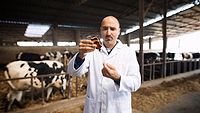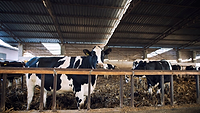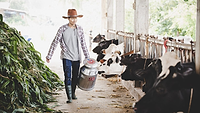Study: Better Controls, Including Vaccines, Needed to Mitigate HPAI H5N1 Outbreak

Image credit: aleksandarlittlewolf via Freepik
A recent study led by the Pirtbright Institute and conducted by researchers in both the U.S. and UK suggests that global control measures for Highly Pathogenic Avian Influenza (HPAI) H5N1 infection in poultry and dairy cattle are insufficient to prevent the worsening of the ongoing outbreak.
The researchers reviewed sustained mammal-to-mammal HPAI transmission in diverse species, including dairy cattle, considering the spread of the virus among herds in North America.
Gaps in control measures for HPAI H5N1 were highlighted, including a reluctance to administer current vaccinations and use modern surveillance technologies.
Additionally, the lack of data collection or sharing is hindering the work of researchers, veterinarians, and policymakers. For example, in the U.S., HPAI H5N1 is only a reportable disease in poultry—not mammals. At present, the U.S. Department of Agriculture (USDA) only requires testing for the virus in lactating cattle prior to interstate transport.
Most concerning to the researchers is the possibility of undetected pathways of transmission spreading through farm animals and staff and then mutating into a virus variant that spreads easily between humans, which could then lead to a human pandemic, complicated by inadequate testing criteria, mistrust in interventions, and/or a lack of resources.
The researchers call for new control strategies, including vaccination, pointing out that current HPAI vaccines for poultry have varying degrees of success, and that they merely reduce disease burden rather than preventing infection.
In August, USDA announced that it will begin testing dairy cows at slaughter for the presence of HPAI H5N1. In the same month, Secretary Tom Vilsack revealed that the agency is beginning field trials for HPAI H5N1 vaccines for cattle.
Looking for a reprint of this article?
From high-res PDFs to custom plaques, order your copy today!






